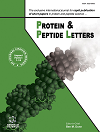
Full text loading...
We use cookies to track usage and preferences.I Understand
Marine organisms represent promising bioactive peptide resources with diverse biological activities such as antioxidant, antimicrobial, antihypertensive, anti-fatigue, and immunoregulatory activities. Despite many studies on marine bioactive peptides, there is a dearth of comprehensive review articles on the emerging trends that encompass the production techniques and the biological applications of marine bioactive peptides. In this review, we summarize the major research and findings related to marine bioactive peptides, encompassing aspects of their production, purification, biological activities, nanotechnology-based strategies, and their potential applications. Enzymatic hydrolysis currently stands out as the most commonly used method for producing marine bioactive peptides; the downstream purification process often includes a combination of multiple purification techniques. Due to their diverse biological properties, marine peptides have garnered considerable interest for industrial applications as active ingredients in the food, pharmaceutical, and cosmetics industries. Additionally, the incorporation of encapsulation strategies such as nano emulsion, nanoliposome, and microemulsions holds promise for significantly enhancing the bioavailability and bioactivity of marine peptides. Future research should also prioritize the systematic identification and validation of the potential health benefits of marine peptides by both in vitro and in vivo animal models, along with the conduct of human clinical trials.

Article metrics loading...

Full text loading...
References


Data & Media loading...
Supplements

